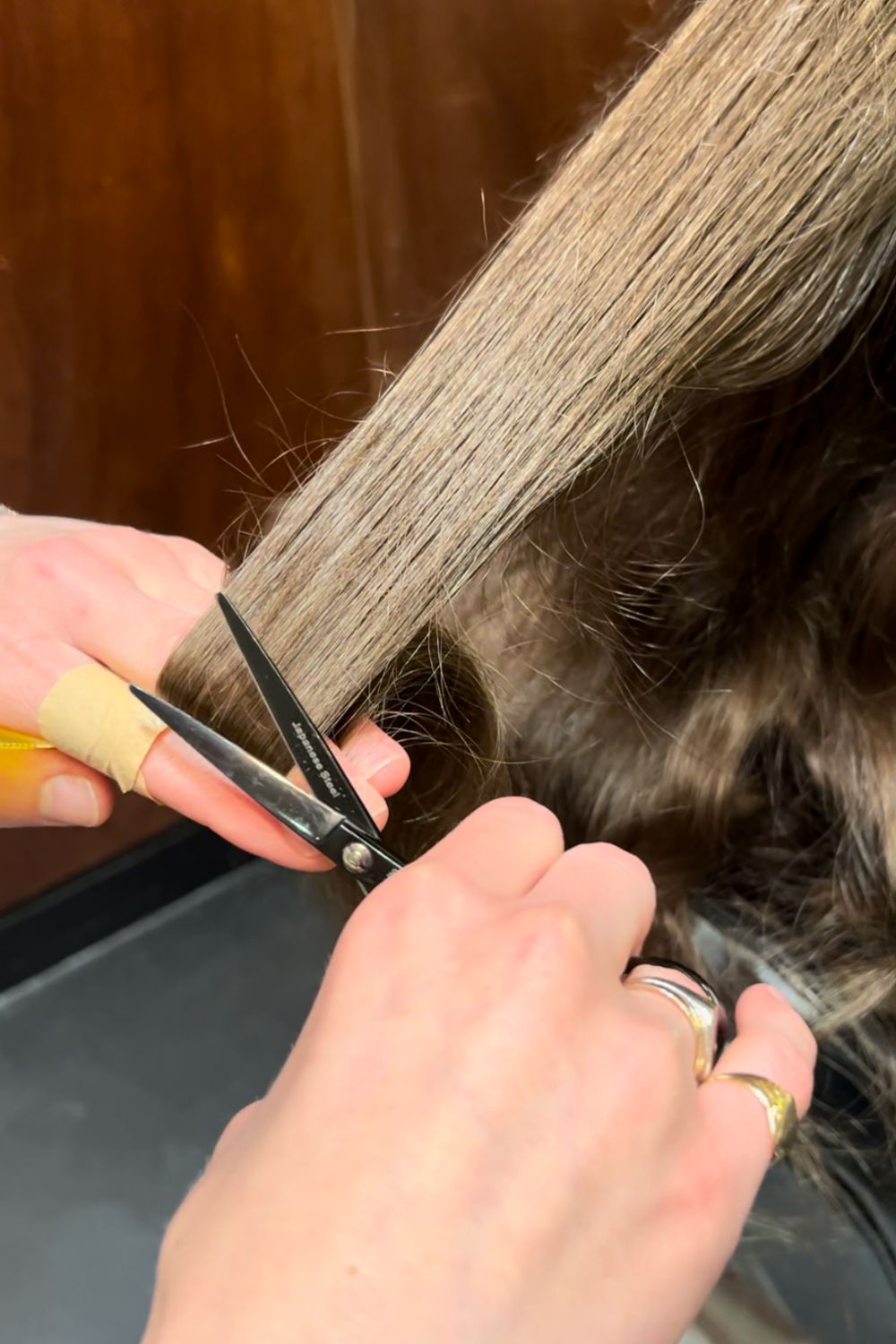I swear by the 'hair dusting' cut for keeping my thick hair long and healthy—here's what to know
It's low fuss and simple

I've always had long hair. (Apart from a stint in 2008 where a hairdresser took my inspiration photo of Lindsey Lohan as an invitation to chop off about 6 inches of hair... but that's a story for another day.) I've also experimented with a number of hair colours over the years (and a few hot dates with Sun-In, which pains me to say). All of this has resulted in long, yet somewhat damaged, hair featuring plenty of split ends. Thanks to hair sandwiching, dryness is less of a problem, however I still have split ends running through my mid-lengths and ends.
Since saying goodbye to my cowboy copper hair and embarking on a hair health journey, I'll do pretty much anything to keep my trims as minimal as possible while still getting rid of the damage.
Enter: hair dusting. The technique has long been used by hair stylists everywhere—most likely doing it at your most recent haircut without you even knowing. It might just be the secret to maintaining the length of your hair whilst keeping split ends at bay. I stopped by Percy & Reed Salon in London to see hairstylist Emma Vickery to show you exactly what hair dusting is so you can see the benefits of it and ask for it at your next appointment.

What is hair dusting?
Hair dusting is essentially where you cut a few strands at a time, focusing on snipping off the split end as opposed to blunt cutting the whole hair. On dry hair, your stylist either bends the section of hair or twists it in sections to reveal the split ends and gradually snips moving upwards. The stylist will skim the hair with the scissors catching only the hairs that stick up because of the damage.
It's something that Zoe Irwin, creative director John Frieda Salons, does often. She starts with dry hair, using a lighter towel or gown if the client is brunette and a black gown or towel if blonde to clearly see each hair. She then twists each section around her finger from the end upwards, carefully going through the hair and snipping off the split or weakened strands.
A post shared by Zoë Irwin (@zoeirwinhair)
A photo posted by on
What are the benefits of hair dusting?

In short: to gain as much length as possible whilst still keeping it looking healthy.
"We found that those coming in for 1cm off the bottom wasn't getting to the split ends and other areas of the hair," says Zoe. "If left, these hairs break and become weaker."
Celebrity news, beauty, fashion advice, and fascinating features, delivered straight to your inbox!
Zoe explains that there's also a trust element. "The psychology of people growing their hair is that they want to leave it for as long as possible between cut appointments and then only having a small amount taken off the ends," she explains. In reality, the hairs that need trimming are on the top layer of hair where things like styling and sunshine cause damage. Doing regular trims to the ends in addition to hair dusting helps keep hair free from split ends and damage whilst maintaining the length.
"The same is true of handbag hair or people catching their hair will lead to one side having more damage than the other side that will need to be treated," Zoe adds.
How often to have hair dusting?
This is all down to how damaged your hair is and your hairstylist can help you decide how often you need to visit. Zoe recommends regular appointments every two months to have a little off the bottom and then some dusting. "I pair the appointment with a lesson on how to put products through the hair, showing the client where the hair needs strength, this is done looking section by section," she adds.
Tori is a freelance beauty journalist and contributor for Marie Claire. She has written for various titles, including Allure, Glamour, Elle, Refinery29, Brides, and more. Currently training to be a nail tech, Tori is a total nail enthusiast and always has time to talk all things nail art. When she’s not writing about beauty and testing products, Tori can be found walking her rescue dog Pip, drinking great coffee, and eating as many croissants as humanly possible.